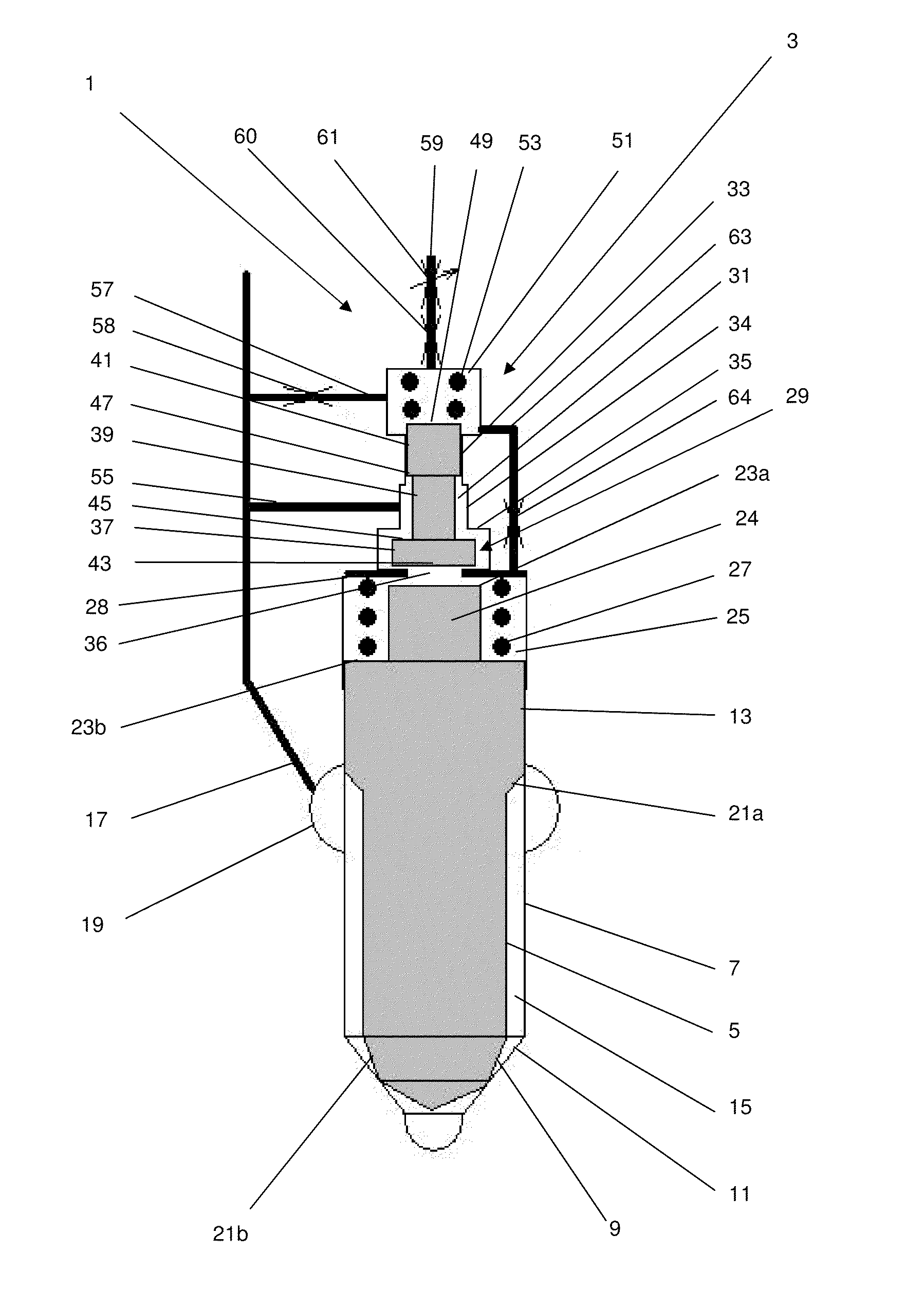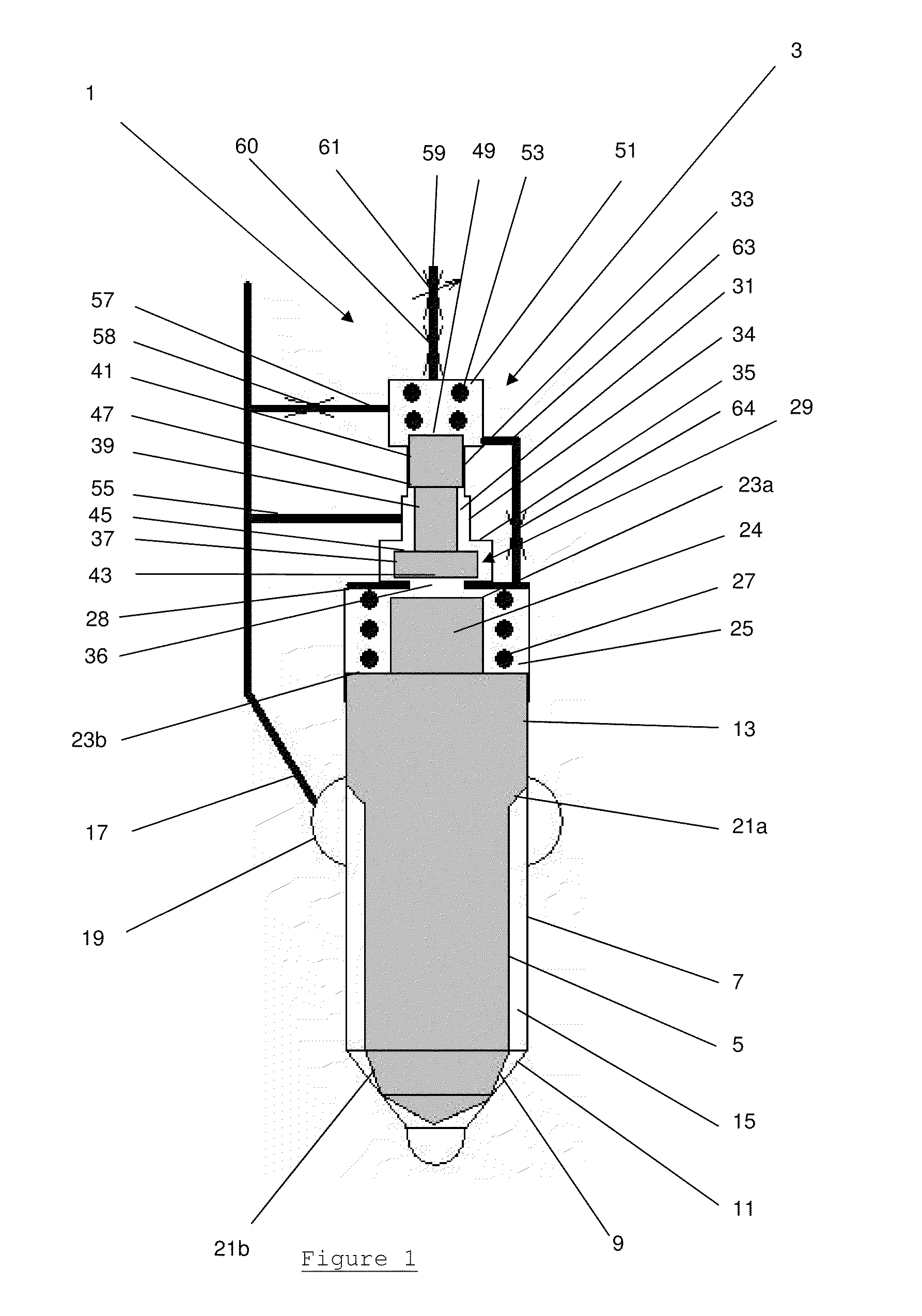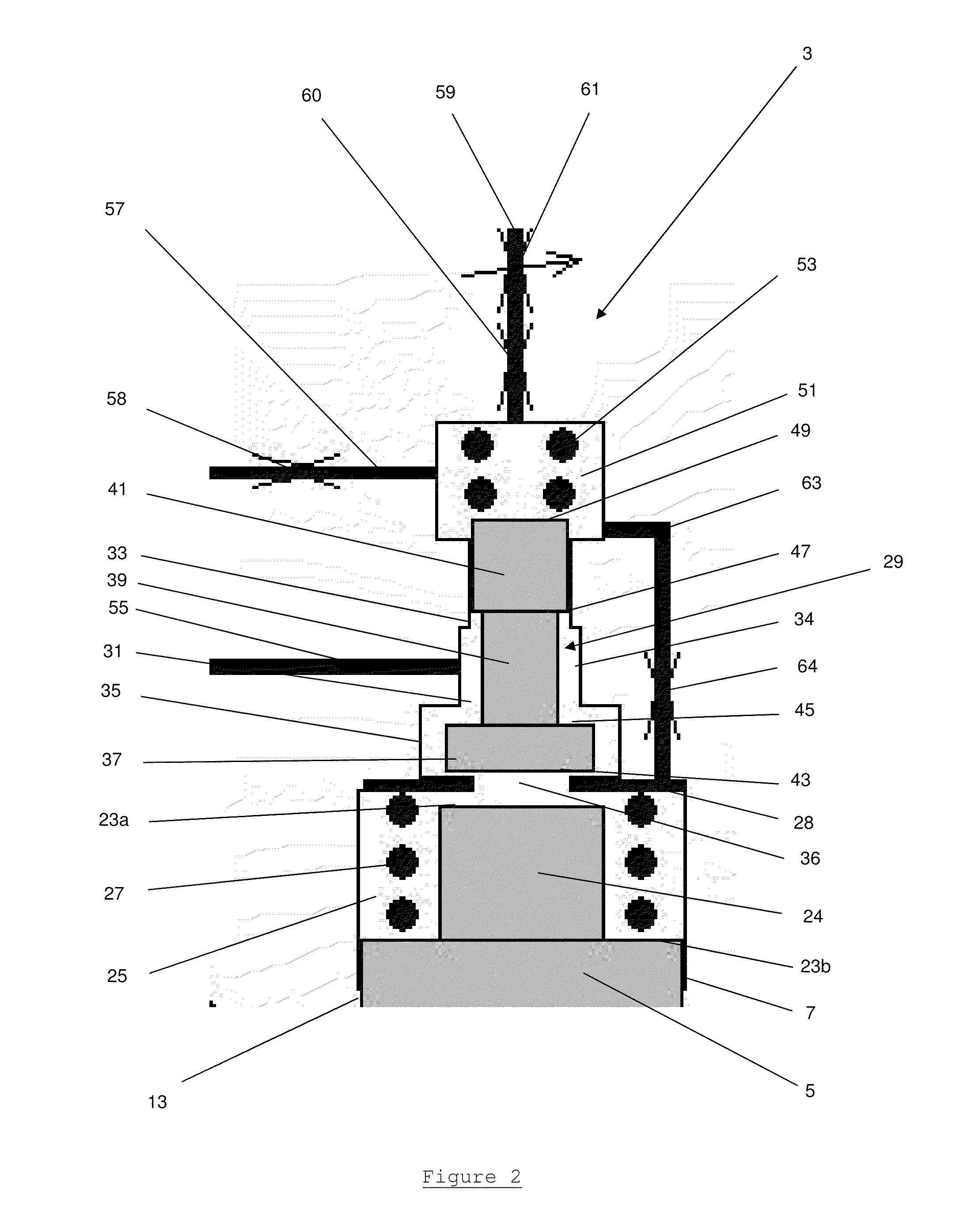Fuel injector with an improved valve control arrangement
a fuel injector and valve control technology, applied in the direction of fuel injection apparatus, machine/engine, feed system, etc., can solve the problems of static leakage, waste of energy, actuator is not able to generate sufficient force to close an unbalanced valve, etc., to facilitate optimisation of the hydraulic system, increase the pressure, and optimise the speed of movement of the injection valve member
- Summary
- Abstract
- Description
- Claims
- Application Information
AI Technical Summary
Benefits of technology
Problems solved by technology
Method used
Image
Examples
Embodiment Construction
[0035]A fuel injector 1, as shown in FIG. 1, is provided with a valve needle control arrangement 3 according to a preferred embodiment of the present invention. The fuel injector 1 comprises a conventional arrangement of a needle valve having a valve needle 5 located within the injector nozzle body 7.
[0036]The valve needle 5 is elongate, has a circular cross-sectional profile and comprises at a lower end a valve face 9 which is complementary in shape to a valve seat 11 provided on the nozzle body 7, such that when the valve face 9 contacts the valve seat 11 a fluid-tight seal is formed between them.
[0037]Towards its upper end the valve needle 5 is provided with a guide surface 13 which engages with the nozzle body 7 in a manner such that the valve needle 5 can slide relative to the nozzle body 7. The clearance between the valve needle 5 and the nozzle body 7 is minimised in order to minimise the flow of pressurised fuel across the guide section 13 from a fuel supply chamber 15, loca...
PUM
 Login to View More
Login to View More Abstract
Description
Claims
Application Information
 Login to View More
Login to View More - R&D
- Intellectual Property
- Life Sciences
- Materials
- Tech Scout
- Unparalleled Data Quality
- Higher Quality Content
- 60% Fewer Hallucinations
Browse by: Latest US Patents, China's latest patents, Technical Efficacy Thesaurus, Application Domain, Technology Topic, Popular Technical Reports.
© 2025 PatSnap. All rights reserved.Legal|Privacy policy|Modern Slavery Act Transparency Statement|Sitemap|About US| Contact US: help@patsnap.com



